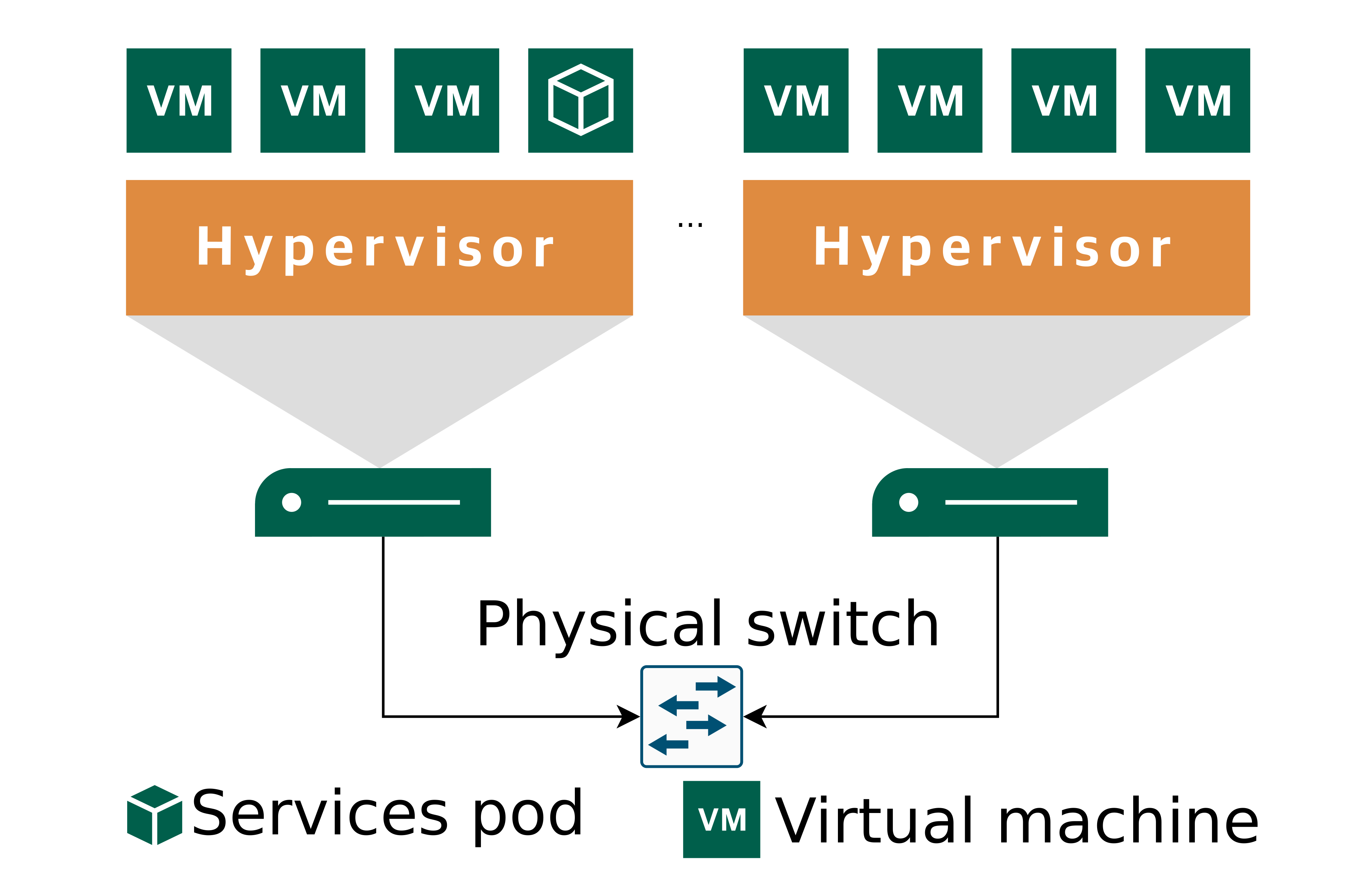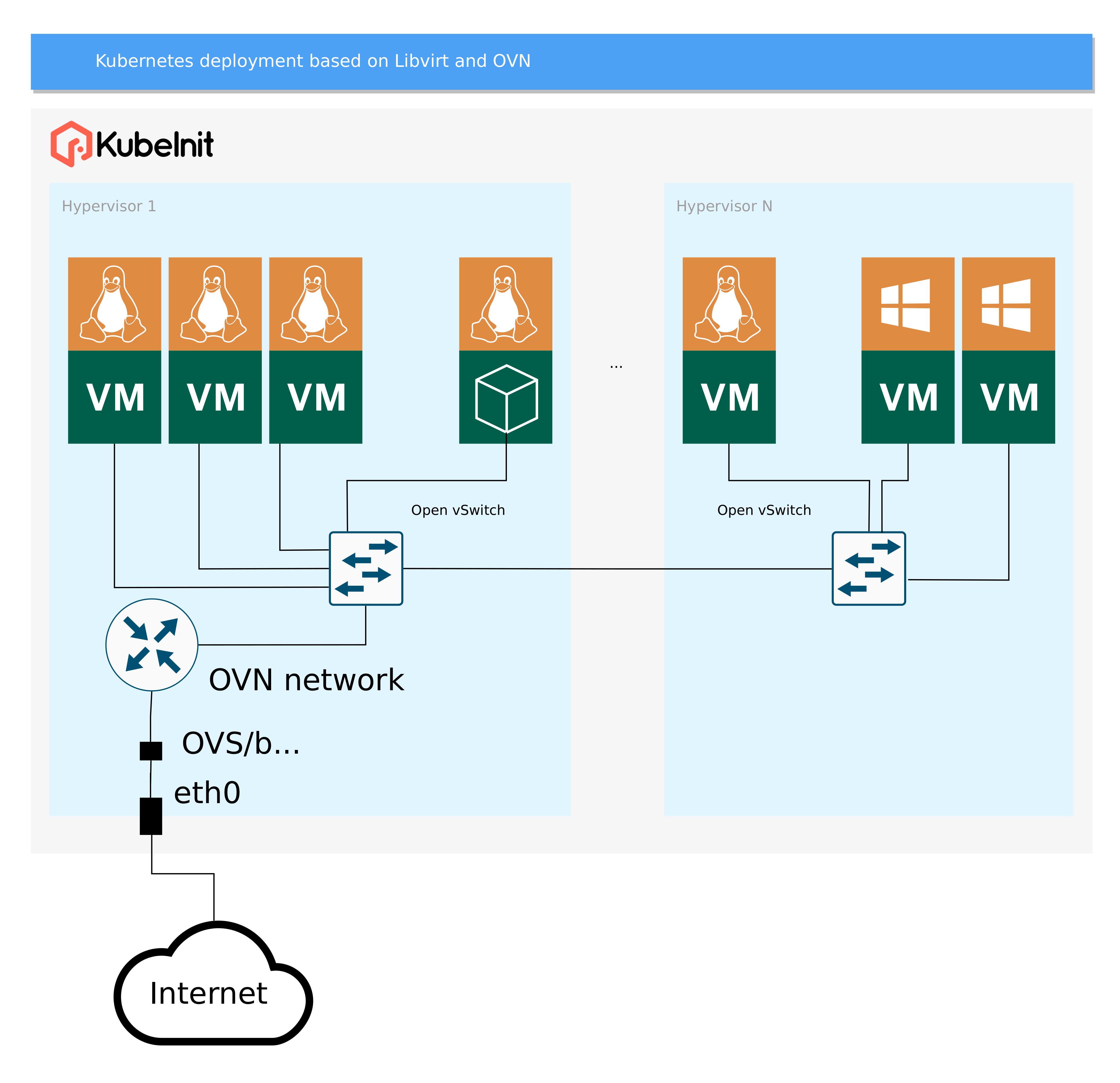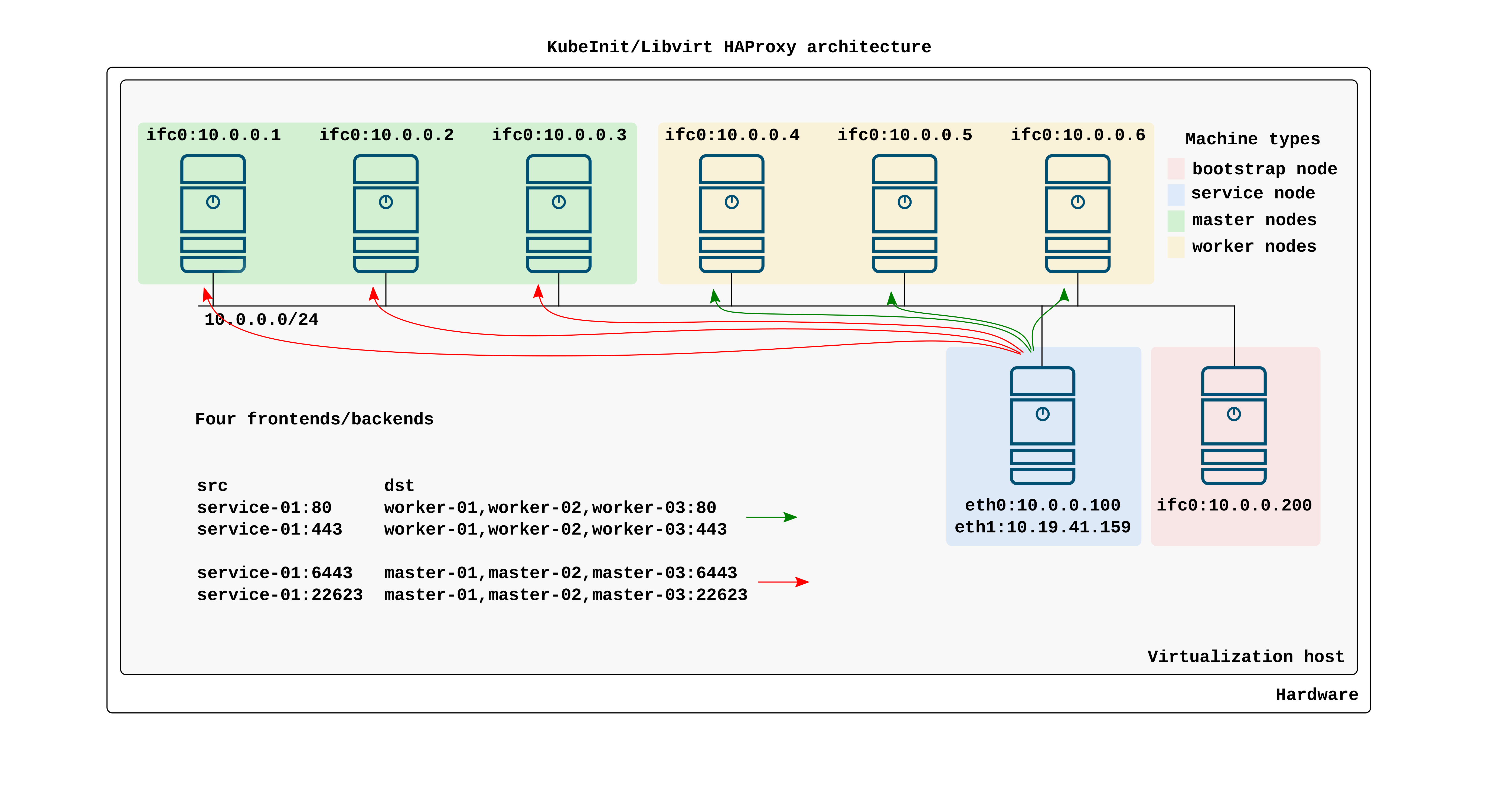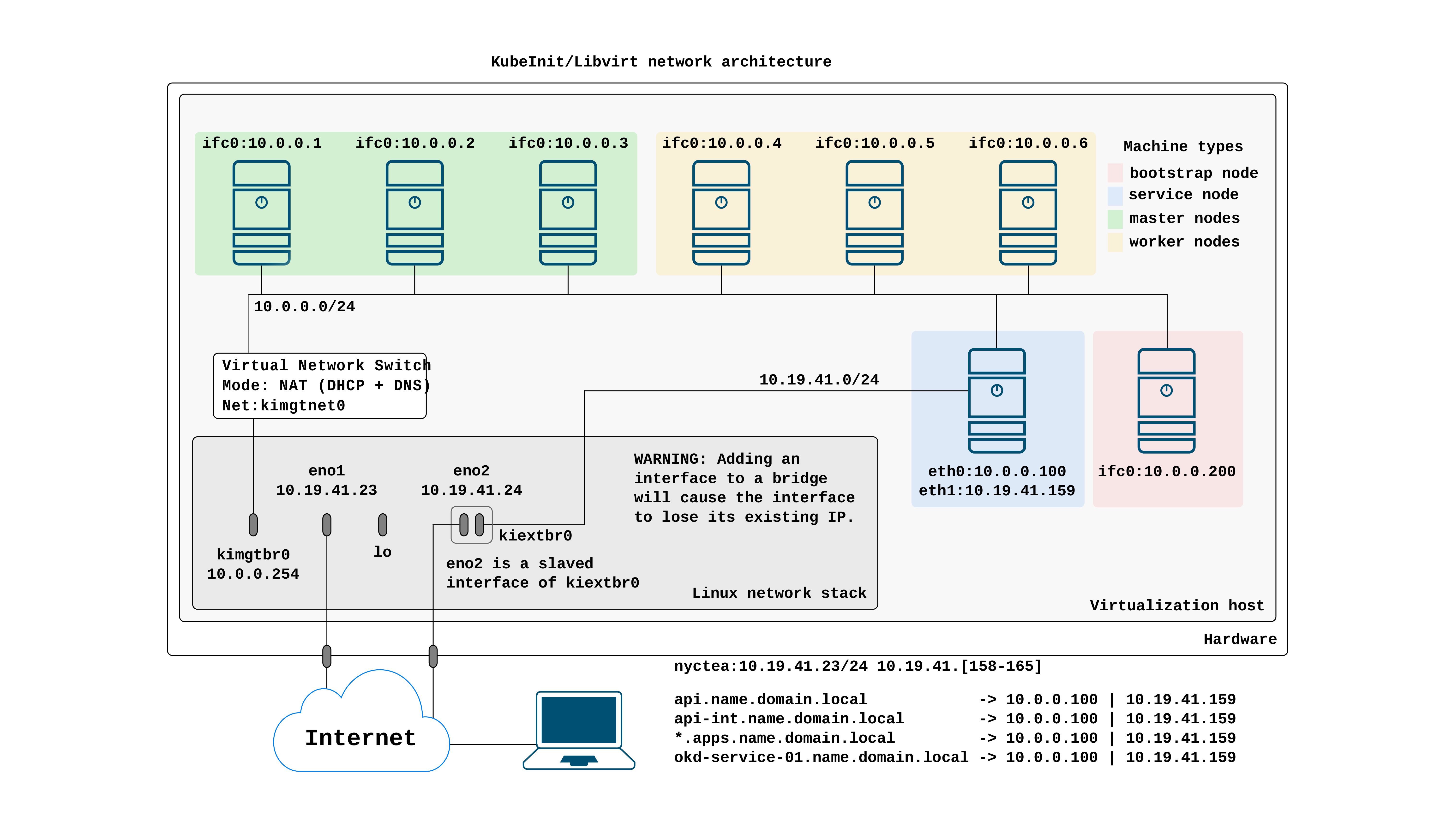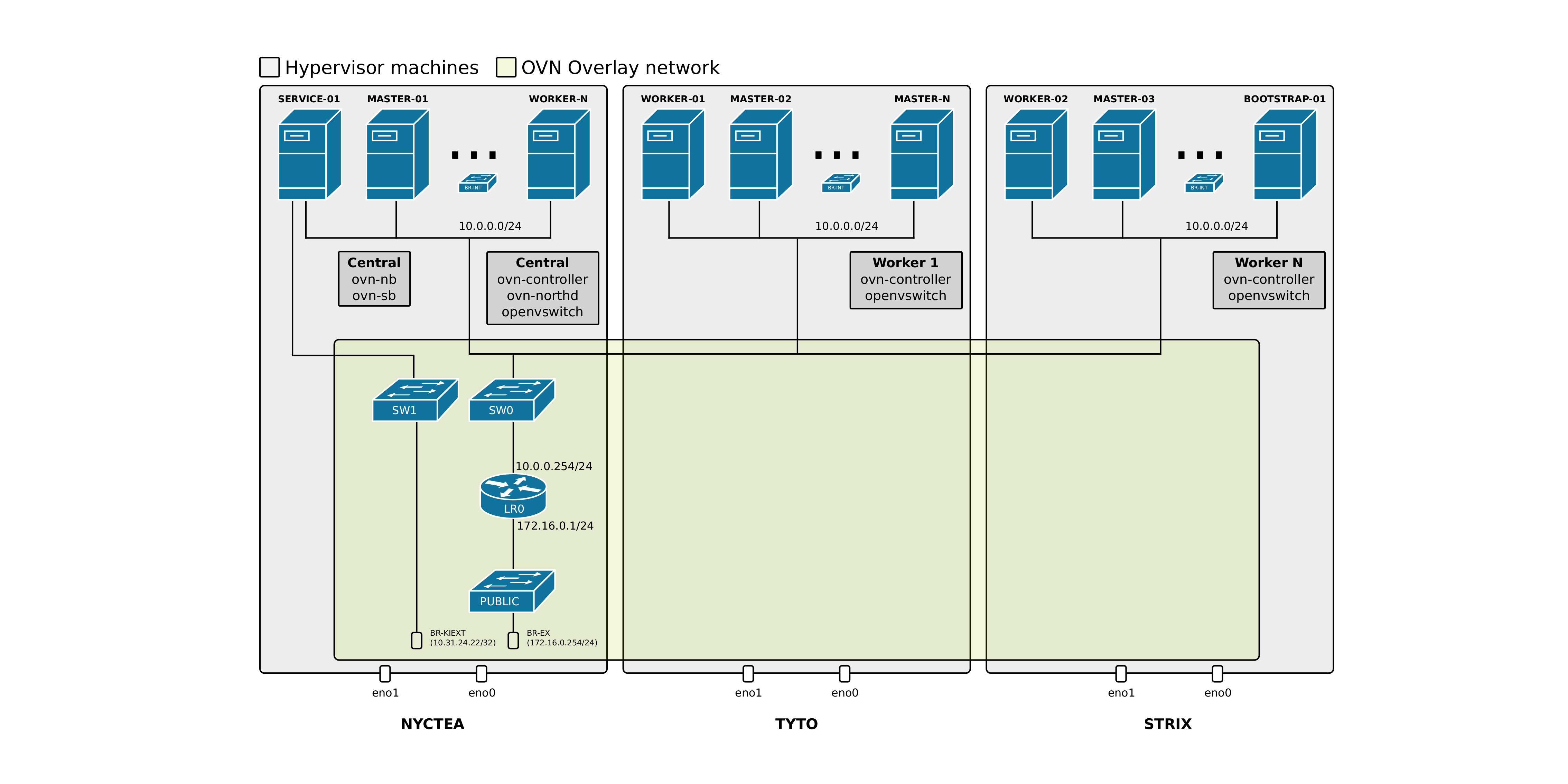Architecture
This section provides an overall view of the project’s architectural design and components.
Kubeinit design
High-level development goals
Challenges of the problem domain
High level architecture
The following diagram how functional components are deployed.
The following diagram how functional components are deployed.
The following diagram how HAproxy routes traffic.
The following diagram how the network is configured.
The following diagram how the OVN network is configured.
Basic components overview
The following diagram describes the main high level components involved in a Kubeinit deployment triggered by Ansible.
Controller: Add here a description.
Bastion host: Add here a description.
Services pod: Add here a description.
Baremetal nodes: Add here a description.
Cluster guests: Add here a description.
Cluster applications: Add here a description.
Baremetal nodes and cluster guests allocation
The following diagram describes a potential distribution of hosts, guests, and services containers.
Each cluster deployment requires a set of infrastructure services to support its correct functioning, the current list of services deployed and configured are Httpd, Bind, HAproxy, Dnsmasq, Nexus, and a Local container registry.
This pod (services pod) will be deployed by default in the first hypervisor but depending on the user’s requirements this pod might be scheduled in any other chassis connected to the cluster.
Services pod architecture
The following diagram describes the reasoning for the infrastructure services to support the multiple clusters that can be deployed
Underlying OVN networking layer
The following diagram describes the networking infrastructure to give networking services to the cluster or multiple clusters deployed.
Ansible deployment sequence diagram
The following diagram describes the internal sequence diagram of a Kubeinit deployment.
